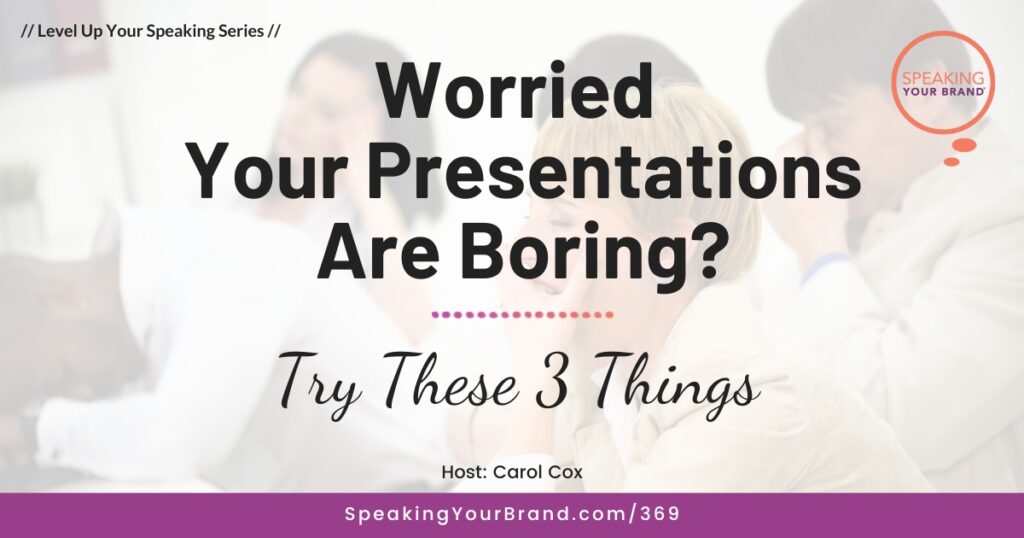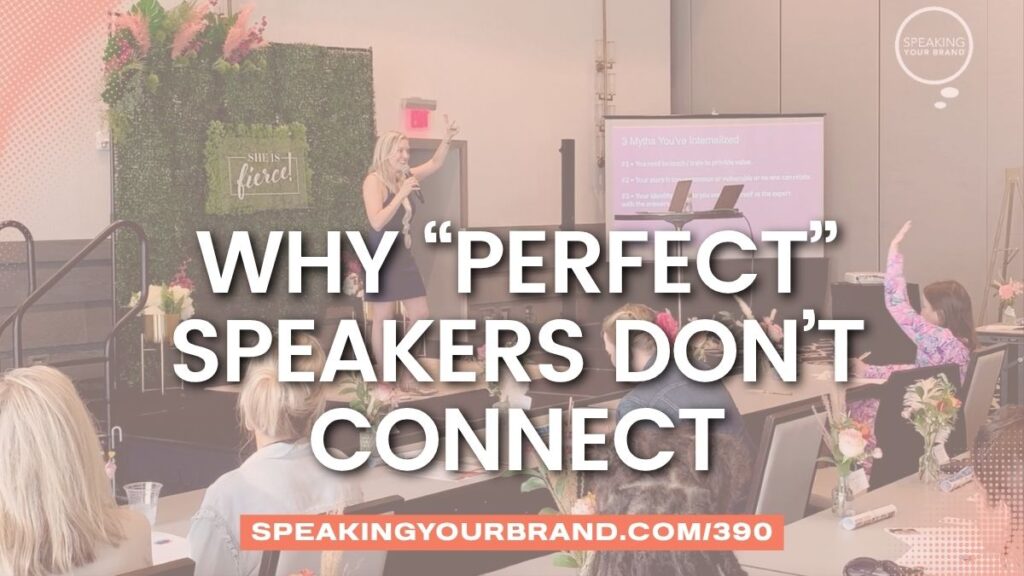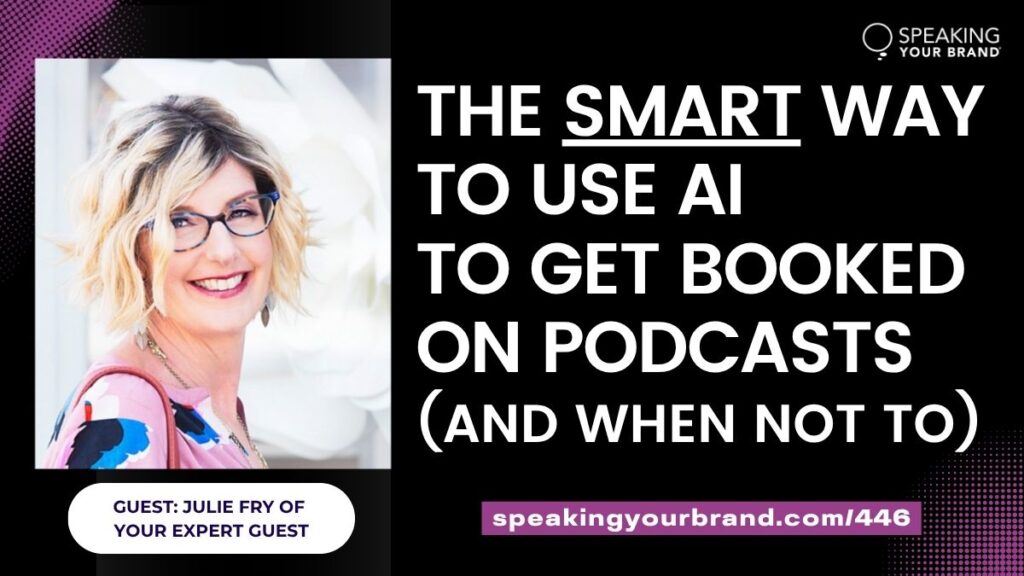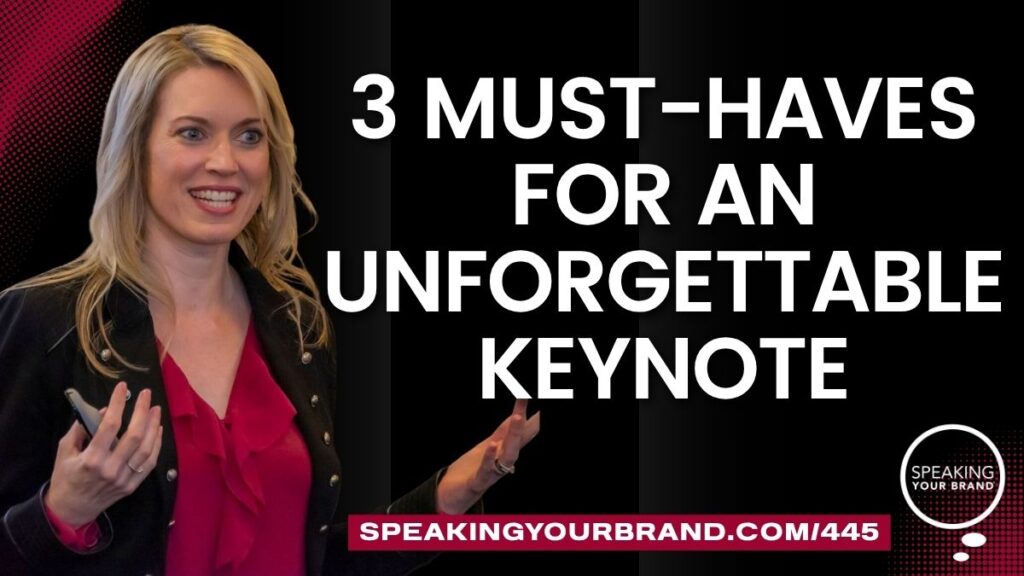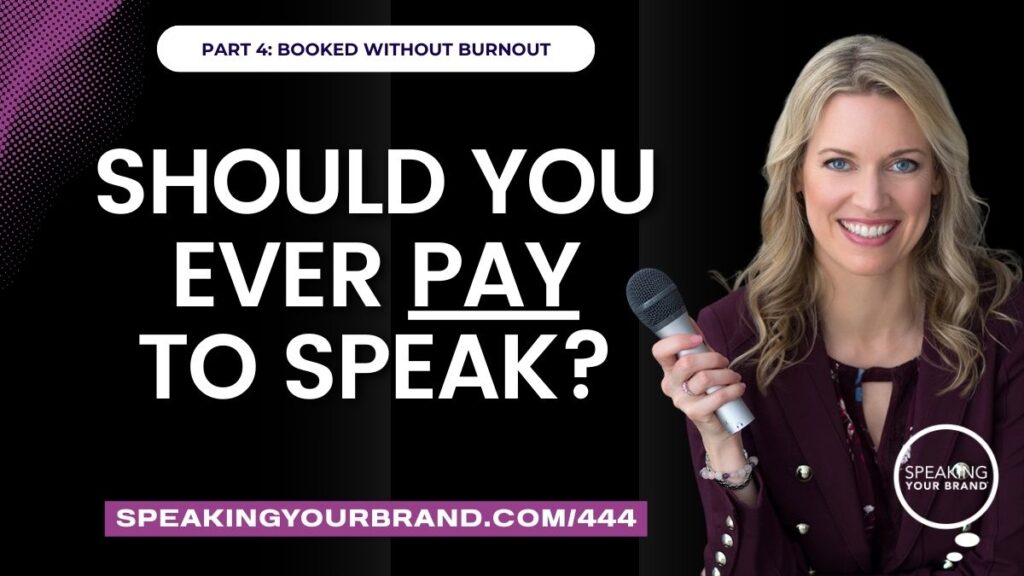369-SYB-Solo-Boring.mp3: this mp3 audio file was automatically transcribed by Sonix with the best speech-to-text algorithms. This transcript may contain errors.
Carol Cox:
If you’ve ever worried that your presentations are boring, you’re going to learn specific things you can do to keep your audience engaged. On this episode of the Speaking Your Brand podcast.
Carol Cox:
More and more women are making an impact by starting businesses, running for office and speaking up for what matters. With my background as a TV political analyst, entrepreneur and speaker, I interview and coach purpose driven women to shape their brands, grow their companies, and become recognized as influencers in their field. This is speaking your brand, your place to learn how to persuasively communicate your message to your audience.
Carol Cox:
Hi and welcome to the Speaking Your Brand podcast. I’m your host, Carol Cox. Do you ever wonder if your presentations are boring? Maybe not completely boring, but just a little bit. Perhaps you have dense material that you need to get through, especially if you’re an academic or a scientist. Or perhaps you’re afraid that everything’s already been said on your topic so you don’t have anything new or interesting for your audience. Well, I promise you that you can make any topic interesting to your audience, no matter what it is and no matter who your audience is. In this episode, I’m going to share with you three things that you can do at that foundational level to make sure your speaking engagements are more compelling. I’m also going to share with you three more advanced techniques that will leave your audiences on the edge of their seats. If you’re new to the podcast, welcome! I’m so glad that you’re here speaking your brand.
Carol Cox:
We work with women entrepreneurs, executives, and leaders to develop their thought leadership platforms and create their signature talks. Now, I have presented hundreds of times in my career, both in person and online, and attendees and event organizers consistently say that my presentations are excellent and engaging. No sleepy faces or eyes glued to their phones in my sessions. Well, what’s the secret? That’s exactly what you’re going to learn in today’s episode. If you would like to work with us in quarter one of 2024, we have two ways that you can do so in our online Thought Leader Academy, we work with you both one on one and in a small group to develop your thought leadership message, create your signature talk and teach you the business of speaking. You can get all the details for that at speaking your brand.com/academy. Our next group starts on January 16th, so coming up very soon. We also have our three day in-person client retreat, Speaking Intensive that is happening at the end of February in Orlando, Florida. At the retreat you get coaching and instruction. We have a stage for you to practice on. We do improv exercises to get you loosened up, and you practice your speaking segments that you’re going to film on day three with the professional videography team that we bring in. So not only do you get an incredible experience coaching instruction, build your confidence and delivering your talk, but you also get professional filming in an edited video for your speaker reel.
Carol Cox:
You can get those details at speaking your brand.com/retreat. Now let’s get on with the show. I’m sure you’ve been in the audience at presentations and talks where you’ve been bored, where maybe the speaker starts out strong and you’re you’re excited to pay attention, but then they lose you somewhere along the way and you start kind of fidgeting, or you zone out, you start thinking about different things, or maybe you even kind of pick up your phone and look at it and hope that no one sees you doing that, or you start doodling on the paper in front of you. Well, you definitely don’t want that to happen when you’re speaking in front of audiences. And you can tell as a speaker when you’re losing your audience because their phones come out, they’re looking around the room rather than making eye contact with you. Maybe they’re even chit chatting to the person next to them, or they get up and leave the room. Now, just because those things happen to a couple of people in your audience doesn’t mean that you’re boring them. Sometimes people have emergencies, or they have to leave, or they have to look at their phone for some reason, so that’s okay. But when you see a lot of people doing it, especially, say at a certain point in your presentation, then you know that you’re losing them.
Carol Cox:
Why do people get bored in presentations? There are a few different reasons. Number one, it could be that your content is too basic for them, so they are well beyond what you’re presenting to them. They already know all of that material, so now they’re bored because they’re not learning anything new. It could be that the content that you’re sharing with them feels irrelevant. They don’t really understand how it applies to them or how it impacts them. It also could feel like your presentation is just a bunch of information strung together. So here’s one thing and here’s another thing, and here’s another thing. There’s no clear beginning, middle and end. There’s no journey that you’re taking the audience on. Also, if your slides have a bunch of text on them and bullet points of meticulous information, then the audience number one is going to try to read those slides rather than listen to you, but then they’re going to get bogged down in all of those details. The purpose of a presentation is to invite the audience to think about something in a different way, not give them a dissertation or say a book on your topic. You can save that for something else, like a book or a workbook. What is not boring? When we think about human psychology, here is what humans find interesting. Number one novelty. So new things. Number two unpredictability. And number three excitement, passion and energy. Let’s take a look at some foundational techniques that you can use.
Carol Cox:
Now if you’ve been a speaker for a while, you are probably already doing these things. Number one is frequent audience engagement. Make it a two way conversation with your audience, not just one way. Don’t forget that there’s an audience in front of you. And this goes whether you’re presenting in person or virtually. So of course you want to ask them questions along the way, have some type of interactivity, have them chat with the person next to them, and then and then do a show of hands to figure out what people came up with. So you want to make sure that you’re engaging the audience throughout your entire presentation. Number two, of course, is storytelling. You know that I talk a lot about the power of storytelling because it helps us to connect with our audiences and help them to see how the material relates to them. The third foundational tip is to use humor. So this could be everything from humorous parts of your stories that you’re telling. It could be even funny gifs, funny memes, funny short video clips that you include in your slides. So humor breaks up a lot of the content and gives the audience a way to kind of just, you know, kind of relax their brains for a little bit from all the material that you’re presenting and then help them to reengage with you. This is why, in our signature Talk Canvas framework, the process that we use when we work with our clients, we have a poster board with the three act story structure laid out because we know as humans, that’s what we’re used to using when we engage with content, when we’re learning something, when whether it’s entertainment or what I like to call edutainment.
Carol Cox:
And on that poster board, we have four different color post-it notes, one color for key points, one color for supporting points, one color for stories and client examples, and one color for audience engagement. So as we’re working with our clients to map out the content of their talk, we want to make sure there’s a balance board, a balance of all of those colors. So we have that frequent audience engagement. We have stories interspersed throughout it. And of course, we also have humor along with those critical key points and supporting points. Now let’s dive into those more advanced techniques. What you want to do as a speaker is create what is called a curiosity gap. You want to keep the audience listening because they want to know what’s going to happen next. Think about novels you read movies and TV shows that you watch, even news stories. Celebrities, politicians, people want things that are new, are different, are novel. But you also don’t want things that are too novel or too different because they end up having very small niche audiences. They abstract art or abstract movies. They may get a lot of praise from kind of the elite insiders, but they’re not going to appeal to larger audiences.
Carol Cox:
So you need to balance novelty with familiarity. So this is advanced technique. Number one is to blend novelty with familiarity. How do you do this. You haven’t. You need to have an interesting idea, a topic that the audience is familiar with. So they already have some basis of context. But you’re presenting an idea, a perspective, an angle that the audience hasn’t already heard before. If you’ve been listening to some of the recent episodes that we’ve done with some of our clients, you’ve heard that as I was working with them on their signature talk, and I would ask them questions and they would share about their topic and their expertise and their material, a light bulb would go on in my mind when I heard something that was something that was different, a different perspective, a different angle. So that’s that novelty plus familiarity. Advanced technique. Number two is unpredictability. Where you can use unpredictability is that as you tell your stories, don’t have them have a predictable cadence or a predictable ending. You can play with the timeline of your story. Say you start your talk. You could start your talk with the beginning of your story, but you could also start it in the middle or at the end, depending on where the story fits with your overall message. Also use suspense when you tell your story. Say things like, I’ll tell you later what happened. Or say, keep this in mind.
Carol Cox:
We’re going to come back to this in a little bit. What you’re doing with those statements is you’re creating an open loop and the person’s mind. And when you create an open loop where you say something like, I’ll tell you later what happened or keep this in mind, we’re going to come back to this in a little bit. Subconsciously, the person is looking for the resolution of that. They’re looking for the answer, or they’re looking for the ending of what you started. So they’re going to be paying more attention to find what that ending is, to close that loop. Doing this also allows the audience to be creative and imagine for themselves what happen if you tell part of your story, but you don’t finish it all at one time and you say, I’ll come back to the ending little bit later on. Now the people in the audience are kind of imagining for themselves what happened, and they’re placing themselves in your story in similar situations they may have had or similar emotions they may have felt in movies. There’s this rule called don’t show the monster. When you’re doing a story that has some type of monster or alien in it. Most of the time, that monster or alien is not shown until the very, very end of the movie, and usually only for a little bit. That’s because storytellers and movie makers know that audiences will be much more creative and imaginative, and thinking about what that monster or alien is like than anything that they can show on the screen.
Carol Cox:
So that’s why when you think about for yourself, that unpredictability is let the audience imagine for themselves what happened. Don’t fill in every single thing for them. Third, advanced technique is your delivery. If you’re monotone, if you’re rushed, or if you’re flat, your audience will reflect that lack of energy to you. They’re going to start becoming disengaged. Instead, you want excitement, passion, high energy in your delivery, in your voice, and in your movement on the stage. Your energy is contagious. You have to be interested in your content for the audience to be interested in it as well. An advanced technique is to intersperse some of those long pauses. Because what happens, and this is especially true for online presentations, is that when there is a gap. When there’s no one speaking. All of a sudden the person kind of perks up and thinks, oh, did I miss something? Did the audio turn off what’s going on? And now you’ve re-engaged them? So those three advanced techniques are all around creating a curiosity gap. You want to have an interesting idea that blends novelty and familiarity. You want to use unpredictability, and you want to make sure that your delivery is full of excitement, passion and energy. I have several podcast episodes that I’ve done recently that will help you to go further with these. One of them is episode 354 Finding and Developing Your Big Idea.
Carol Cox:
Episode 352 seven Things the Best Speakers Do. My takeaways from attending Tedwomen and episode 345. Elevate your audience engagement skills with these proven strategies. The links to those episodes are in the show notes as well. If you’re ready to deliver an outstanding signature, talk to find your interest and idea to learn the business of speaking so you get the speaking engagements that light you up, I invite you to check out our Thought Leader Academy. You can get all the details, including pricing and speaking your brand.com/academy. And don’t forget about our upcoming three day in-person client retreat. This is what’s going to help you to take your delivery from good to great. You can get all of those details as well as pricing as speaking your brand. Com slash retreat. We’re continuing this new podcast series that we’re doing to help you level up your speaking. On the next episode, I’m going to talk to you about how to overcome speaking nerves and anxiety so you can build confidence on stage. We all get nerves and that’s to be expected, but there are certain things you can do to mitigate them so that you enjoy every time you speak in front of an audience. If you’ve enjoyed this episode, share it with a friend or colleague. You can text the link right to them from your podcast app. You can also share it on LinkedIn and be sure to tag me if you do. Until next time, thanks for listening.
Sonix has many features that you’d love including automated subtitles, transcribe multiple languages, collaboration tools, enterprise-grade admin tools, and easily transcribe your Zoom meetings. Try Sonix for free today.

